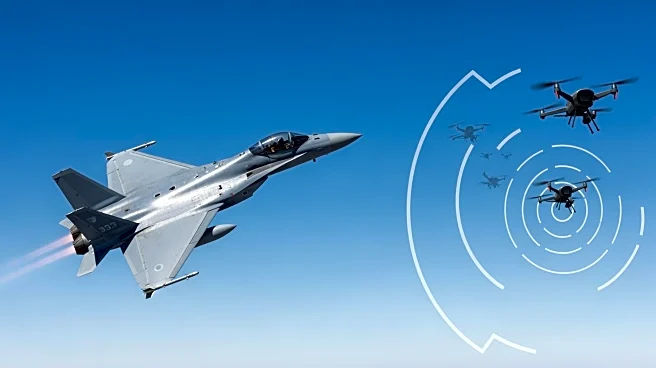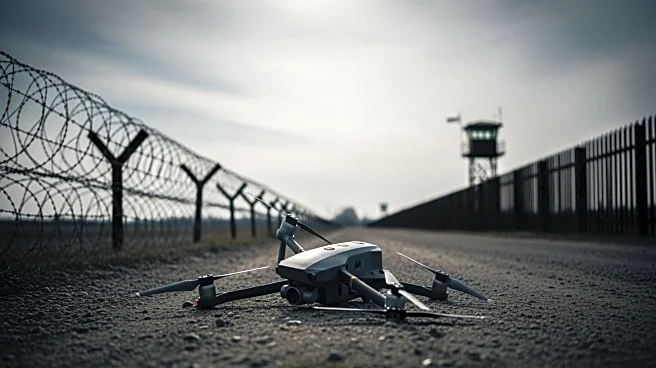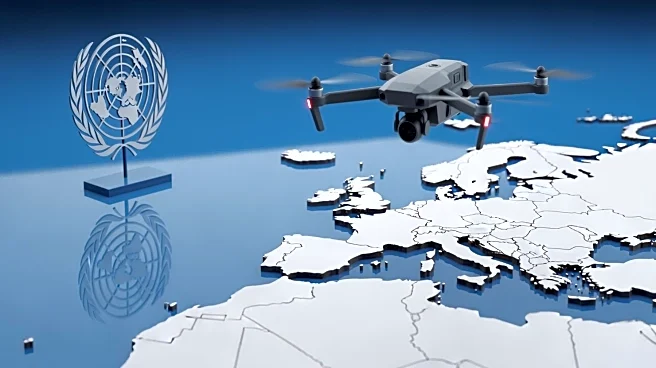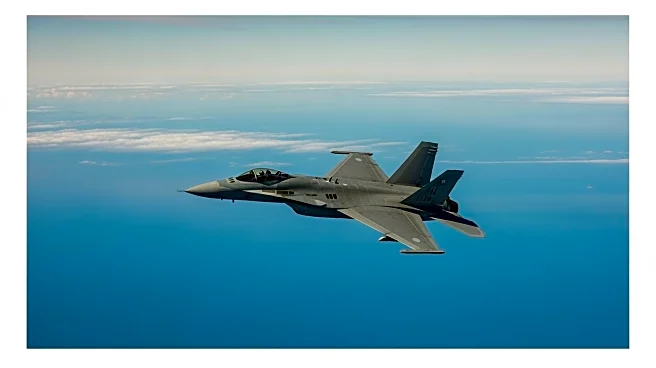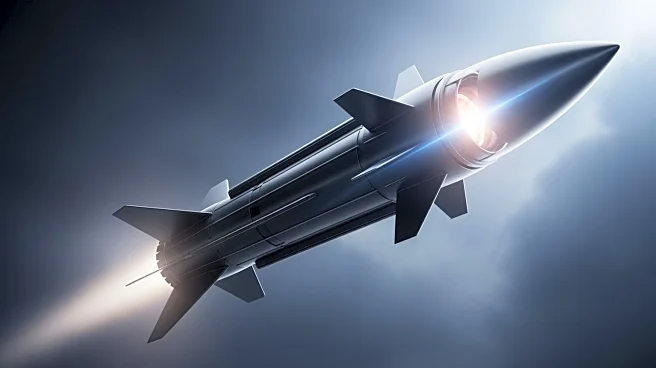What's Happening?
More than a dozen Russian drones entered Polish territory overnight, with several intercepted and shot down by NATO forces. NATO Secretary-General Mark Rutte said that the alliance scrambled Polish F-16
and Dutch F-35 fighter jets in response. It also relied on German Patriot air defense systems and Italian surveillance aircraft. Polish Prime Minister Donald Tusk called the incident a 'large-scale provocation' and invoked NATO Article 4, leading to consultations with the alliance. The Kremlin accused the EU and NATO of making unfounded allegations but did not deny Russian involvement. Belarus suggested the drones had lost their track due to electronic warfare.
Why It's Important?
The incident marks a significant test of NATO's defense capabilities and unity, as it is the first known instance of NATO firing shots in response to Russia's war in Ukraine. The drone incursion challenges NATO's deterrence strategies and highlights the need for enhanced air defense systems. It underscores the geopolitical tensions in Eastern Europe and the potential for further escalation. The situation may influence NATO's strategic posture and prompt increased military spending among member states, particularly those bordering Russia and Belarus.
What's Next?
NATO allies are likely to invest in expanded sensor networks and air defense capabilities along the Polish and Baltic borders. The alliance may consider diplomatic and military responses to deter future incursions, including increased air patrolling and strengthening air defense on the Eastern flank. The incident could lead to further consultations under Article 4 and potential sanctions against Russia. Additionally, NATO may explore new technologies to counter unmanned aerial vehicles and enhance its defense strategies.
Beyond the Headlines
The drone incursion raises questions about the effectiveness of NATO's deterrence strategies and the potential for further escalation in Eastern Europe. It highlights the complexities of modern warfare, where unmanned aerial vehicles can be used to test and provoke military responses. The incident may also impact public perception of NATO's ability to protect member states, influencing political discourse and defense policies. Furthermore, it underscores the importance of technological advancements in air defense systems and the need for international collaboration to address emerging security threats.
